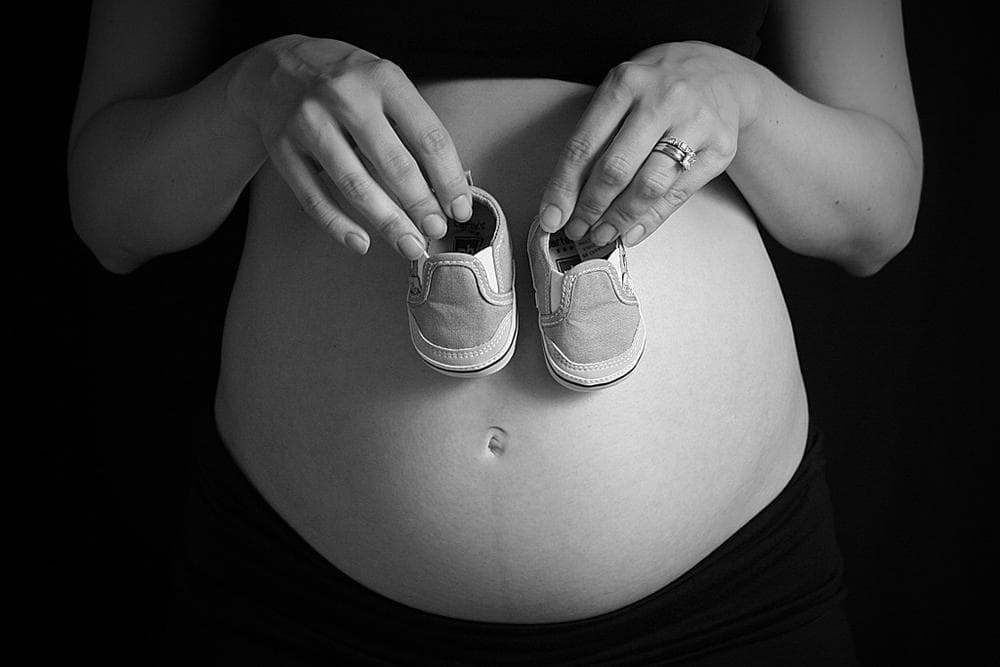Advertisement
Study: Do Even Older Moms Have To Wait 18 Months Between Pregnancies?

Dispatch from the state with the oldest first-time moms: A lot of us face a dilemma when it comes to baby No. 2. The clock is ticking louder than ever. But our doctors tell us that it's medically wise to wait at least a year and a half after giving birth before conceiving again.
It can be a difficult decision no matter what — weighing medical risk against infertility risk — but at least we now have some new data points to factor in. A new paper in the journal JAMA Internal Medicine uses medical records from nearly 150,000 Canadian pregnancies to tease out how a mother's age influences the effects of a shorter-than-recommended interval between pregnancies.
For older moms in a hurry, the bad news is that the study adds evidence that conceiving within 12 months of a birth does mean heightened health risks for both mother and child. But epidemiologist Laura Schummers, who led the research while at Harvard and is now a post-doctoral fellow at the University of British Columbia, says there's good news for you here as well:
"The optimal spacing window that we found was one to two years after the delivery of one child until the conception of the next pregnancy," she says. "That one- to two-year window, that's when we found the lowest risk for both mothers and babies," and that's short compared to some previous studies that had suggested the optimal wait was between 18 months and up to five years.
Past research has found a clear link between short "interpregnancy intervals" and risks for mother and baby. But why? The debate, Schummer says, revolves around whether the short interval is a direct biological cause of the risks, or whether it reflects other forces at work — for example, a lack of access to health care and unintended pregnancies.
Because older women are likelier to plan their pregnancies and have better access to care, Schummers and colleagues hypothesized that the mothers would not incur risks as younger women do if they had babies close together.
Wrong. "In fact," Schummers says, "we found that there were risks of adverse infant outcomes for women of all ages."
The risks to the babies were higher among younger women, which was consistent with the team's hypothesis. But risks to the mothers were higher among older women — indeed, only older women incurred higher risks to their own health by getting pregnant again so soon.
After accounting for other factors that could drive these numbers, Schummers says, the stats shake out like this:
• For women 35 years or older who conceived just six months after a birth, 6.2 per thousand experienced serious illness or injury, including death. Wait 18 months and that risk drops to 2.6 per per thousand. So, small absolute numbers but a dramatic difference.
• A "severe adverse infant outcome" includes stillbirth and being born very early or very small. Among women ages 20 to 34, those who conceived after just six months had 20 babies per thousand with those severe outcomes; the risk drops to 14 per thousand among those who waited 18 months.
• Among women 35 years or older, there were 21 severe infant outcomes per thousand among those who waited just six months; the risk drops to 18 per thousand among those who waited 18 months.
"This shows you both the relationship between pregnancy spacing and the increased risk," Schummers says, "but also that older women tend to have a higher baseline risk of many of these outcomes at all pregnancy spacing lengths."
The research turned up a similar pattern for premature birth: that a short pregnancy interval raises the risk for all women, but particularly for younger women. The risk for them dropped from 53 per thousand at a six-month interval to 32 per thousand at an 18-month interval. For women over 35, the risk dropped from 50 per thousand at six months to 36 per thousand after 18 months.
It seems commonsensical that a woman's body may need more than six months to fully recover from building a baby and giving birth, but the actual mechanism behind the risks of short pregnancy intervals is not fully clear.
The leading theory, Schummers says, is that nutrients like iron or folate could be depleted in the mother's body. But more research is needed to see if that theory holds in developed countries like the United States and Canada, or if there are other mechanisms that have not yet been identified.
For now, she says, her team hopes these new findings can help women make decisions within their own personal contexts, and in consultation with their medical teams. The data may be particularly helpful for older women, she says, because they more often decide to have short pregnancy intervals on purpose.
"And so if you're making that kind of decision on purpose," she says, "it's easier to say, 'You know, let's wait another three months.' "
